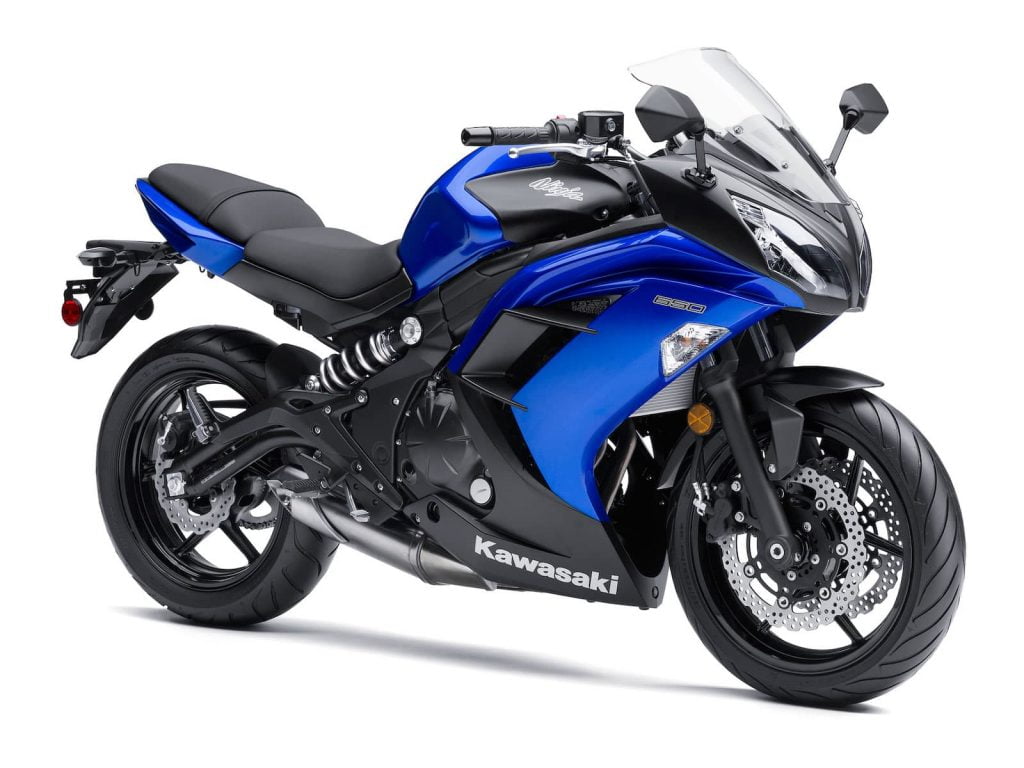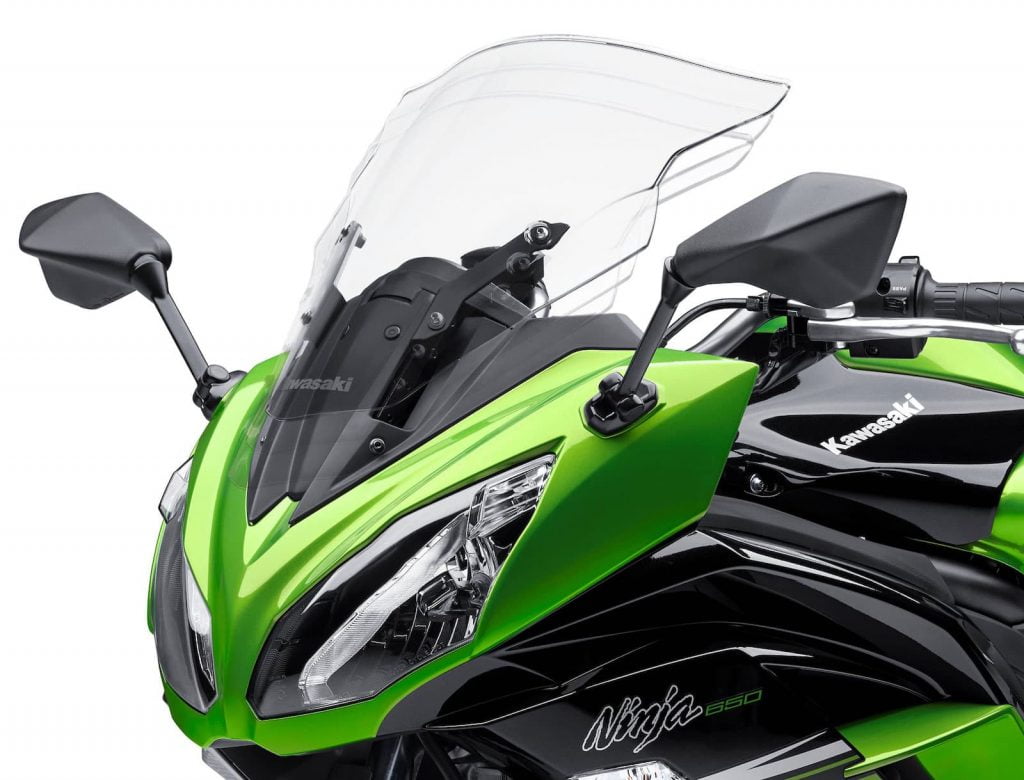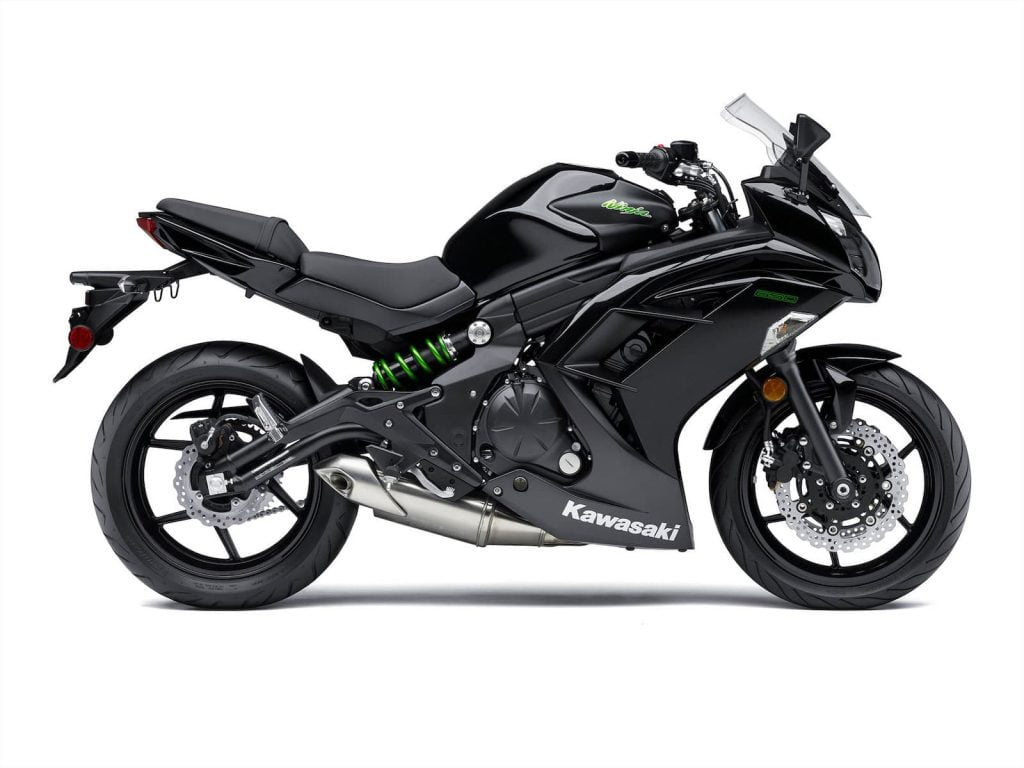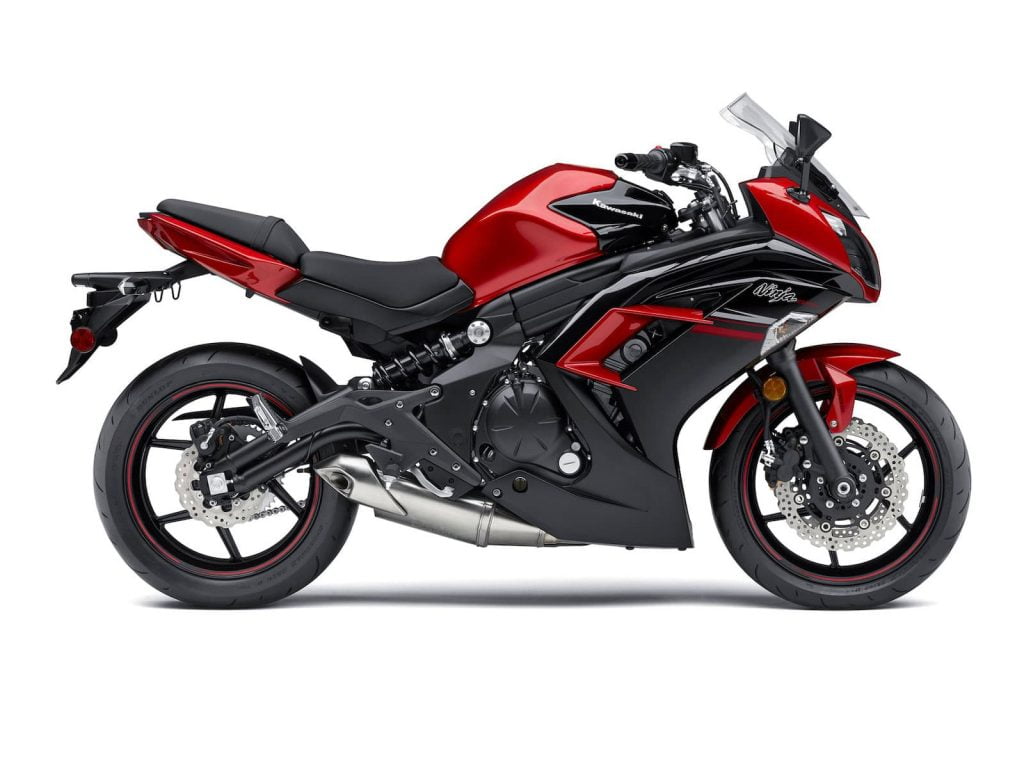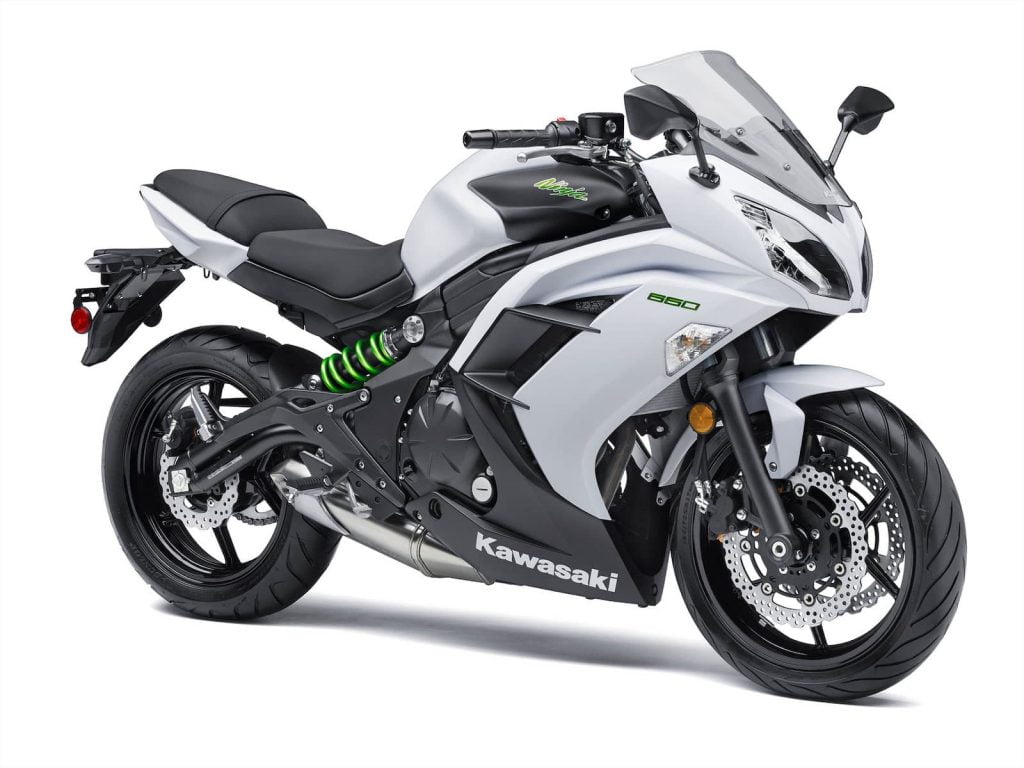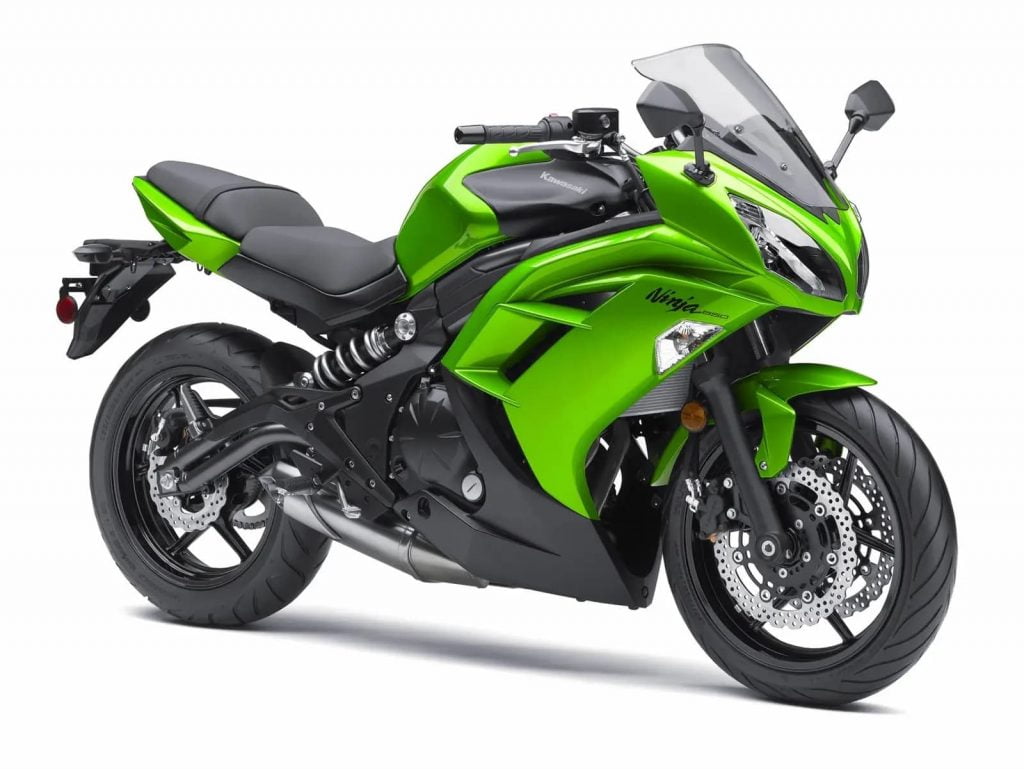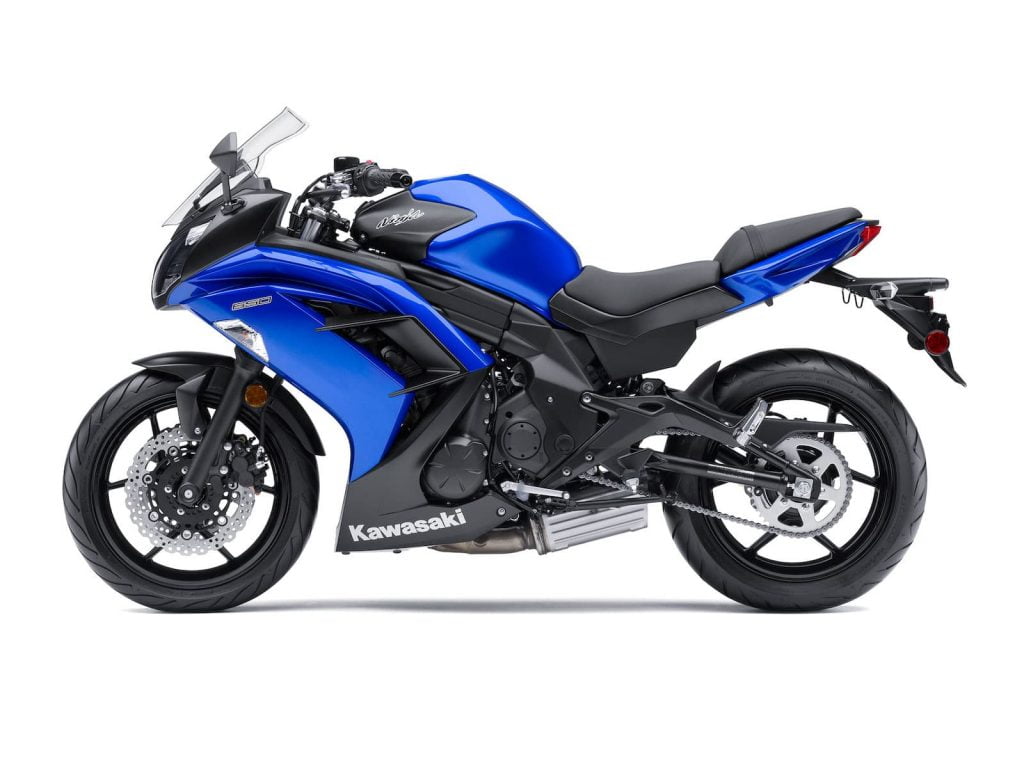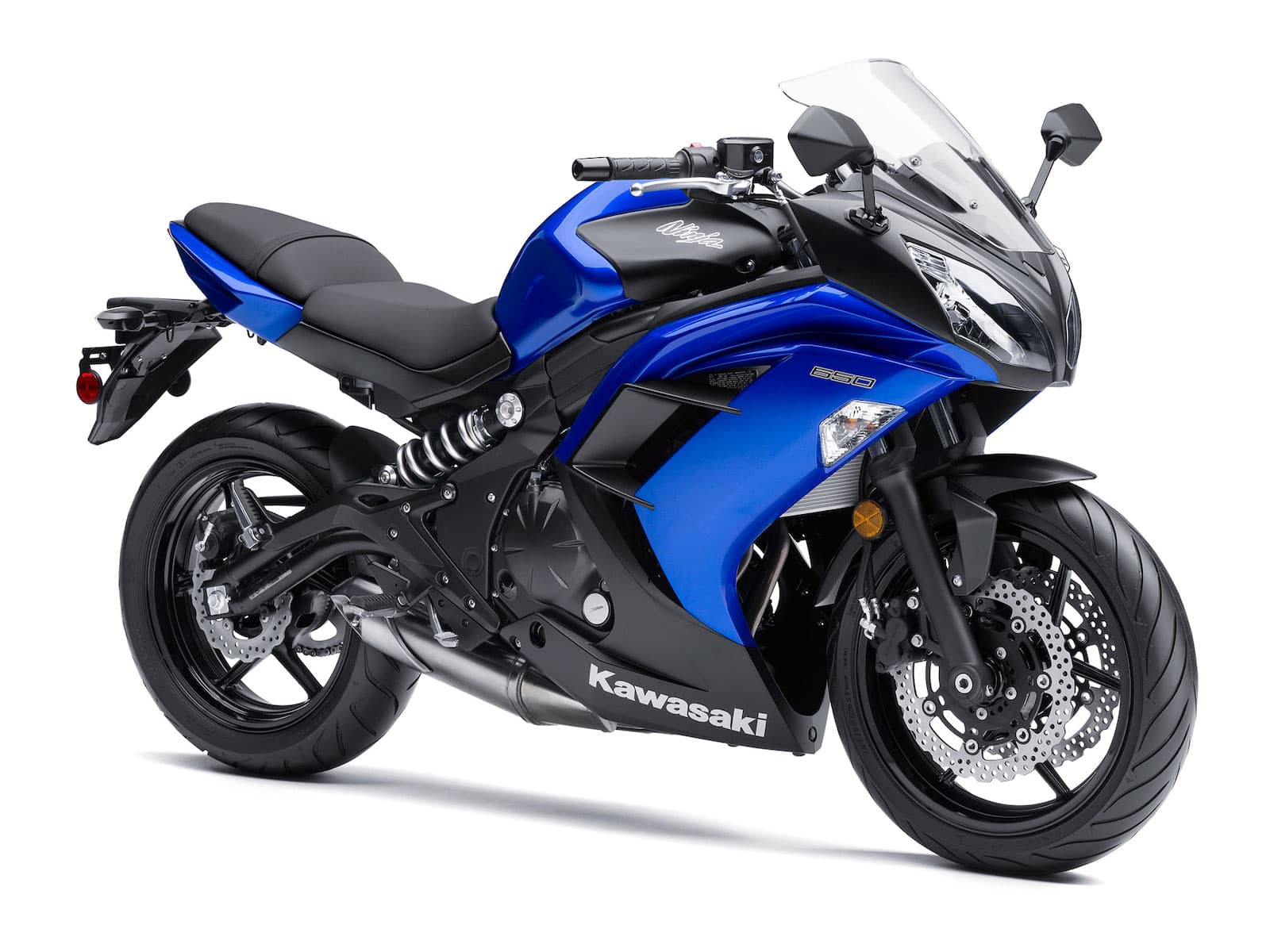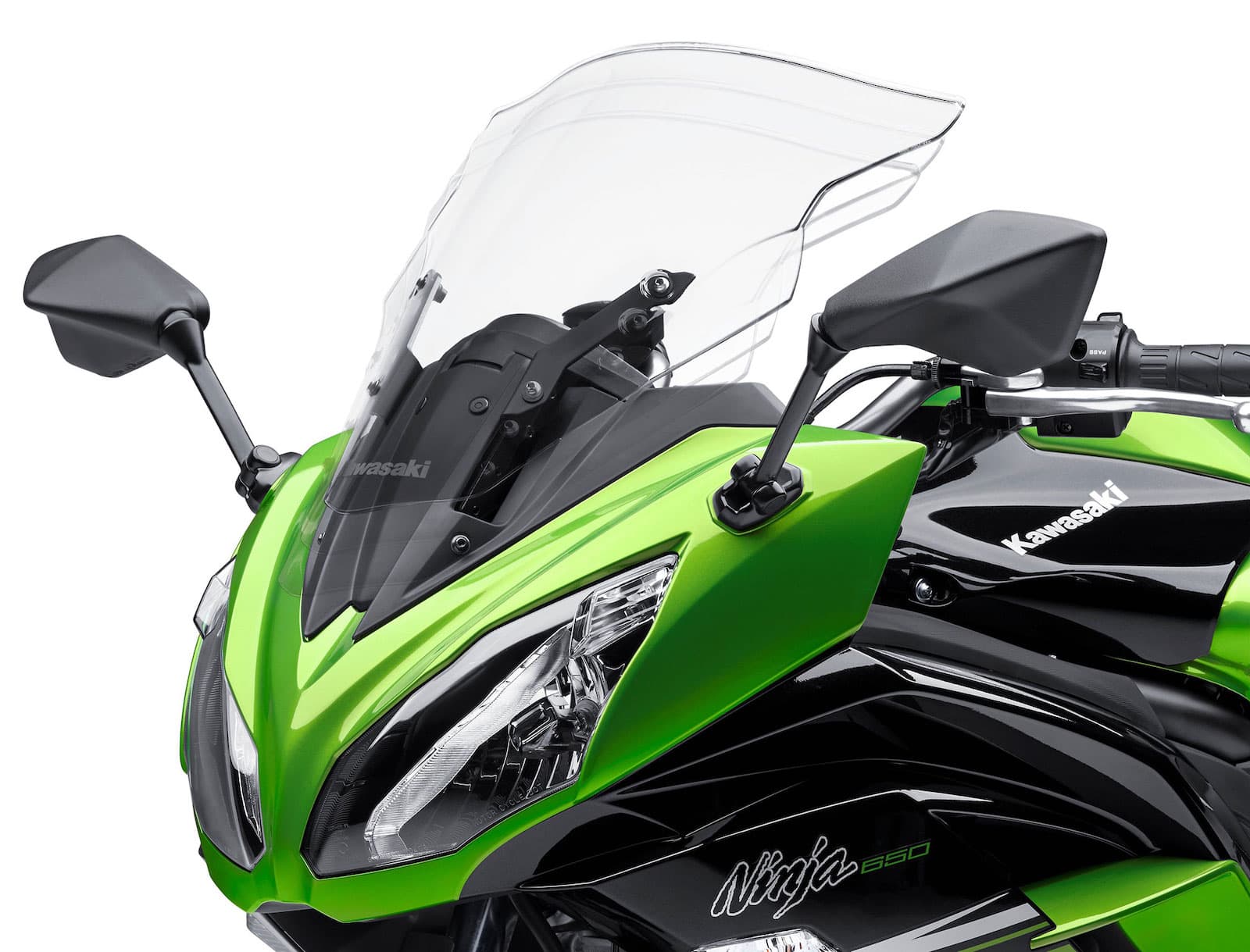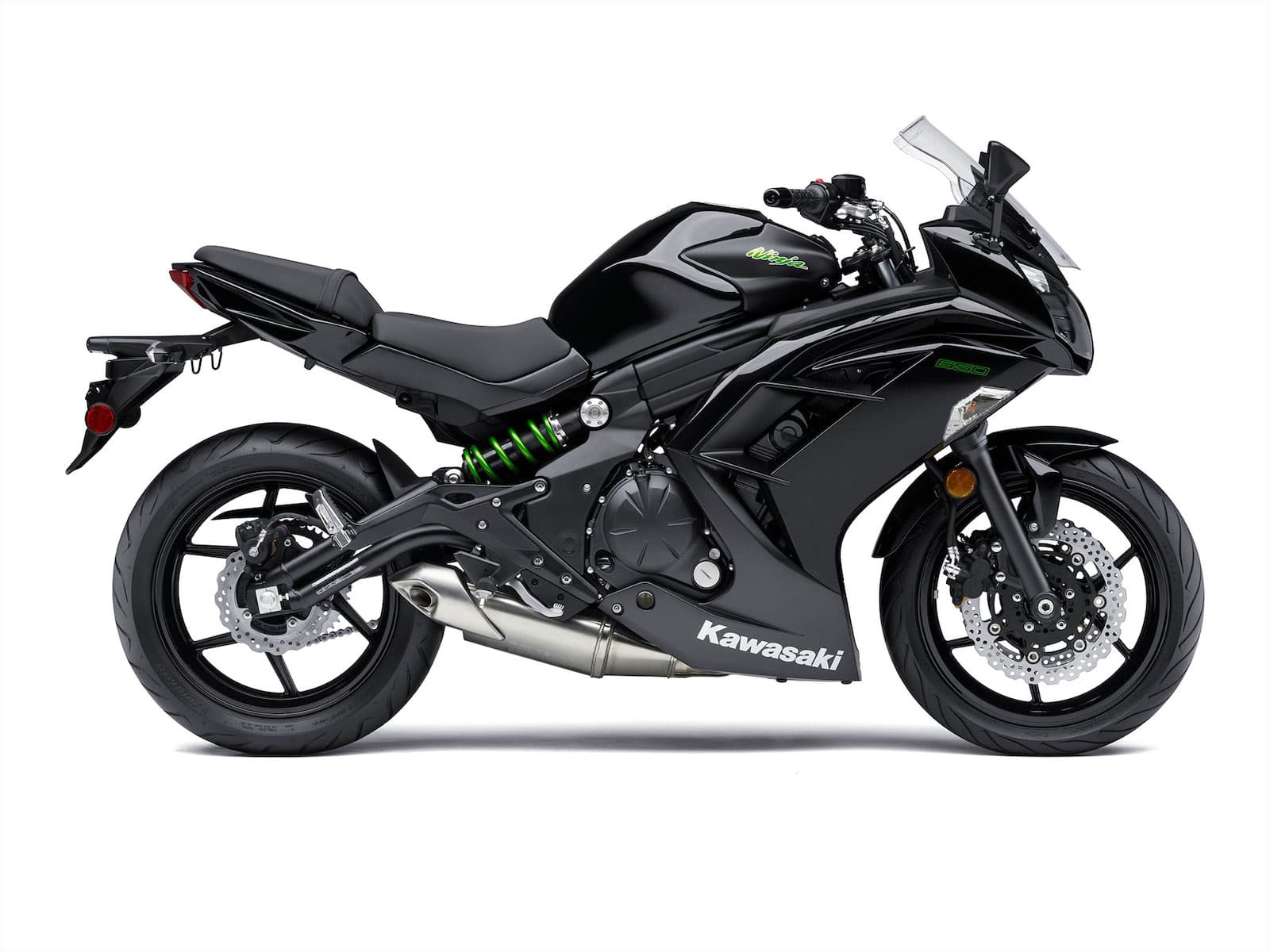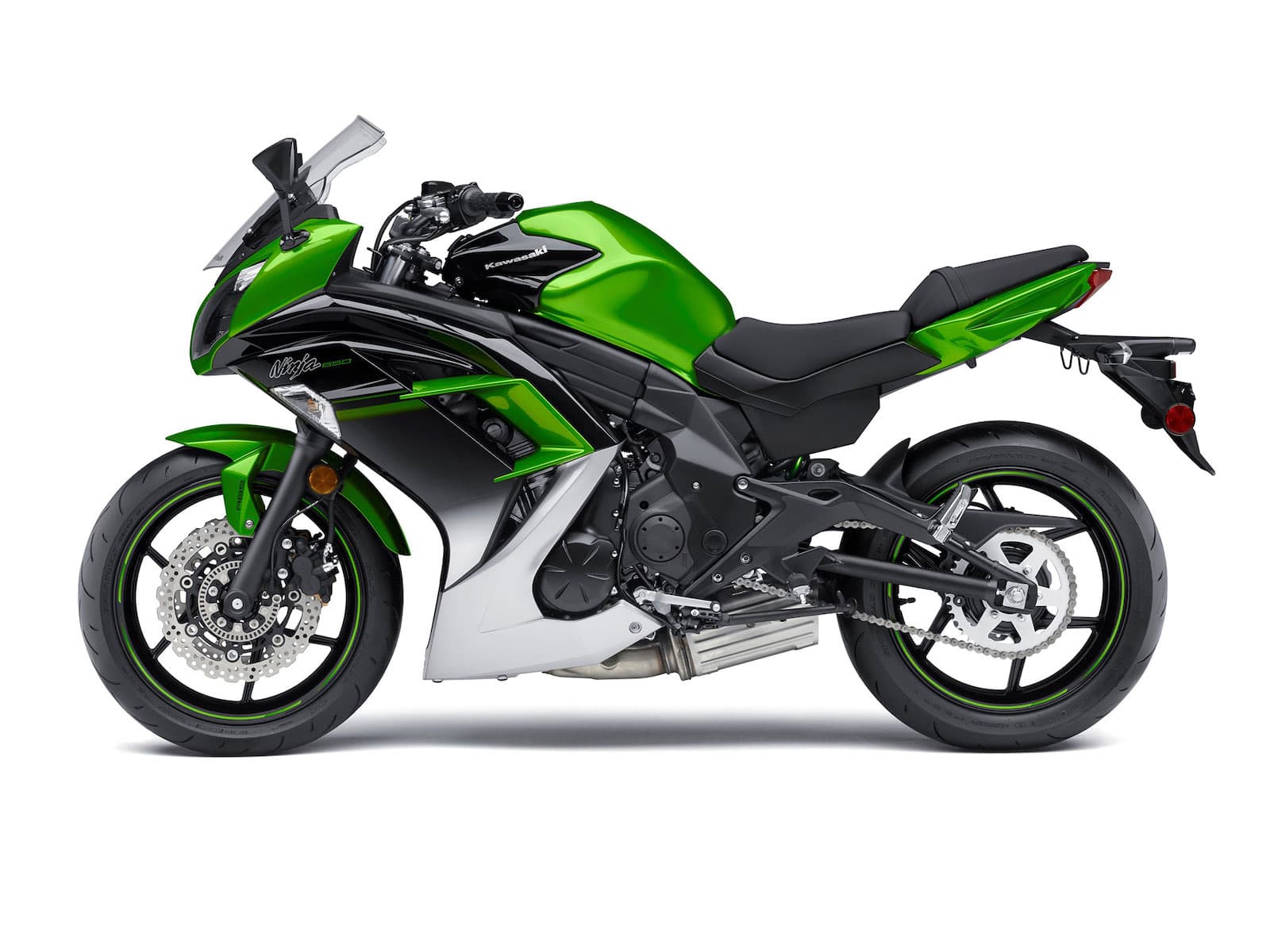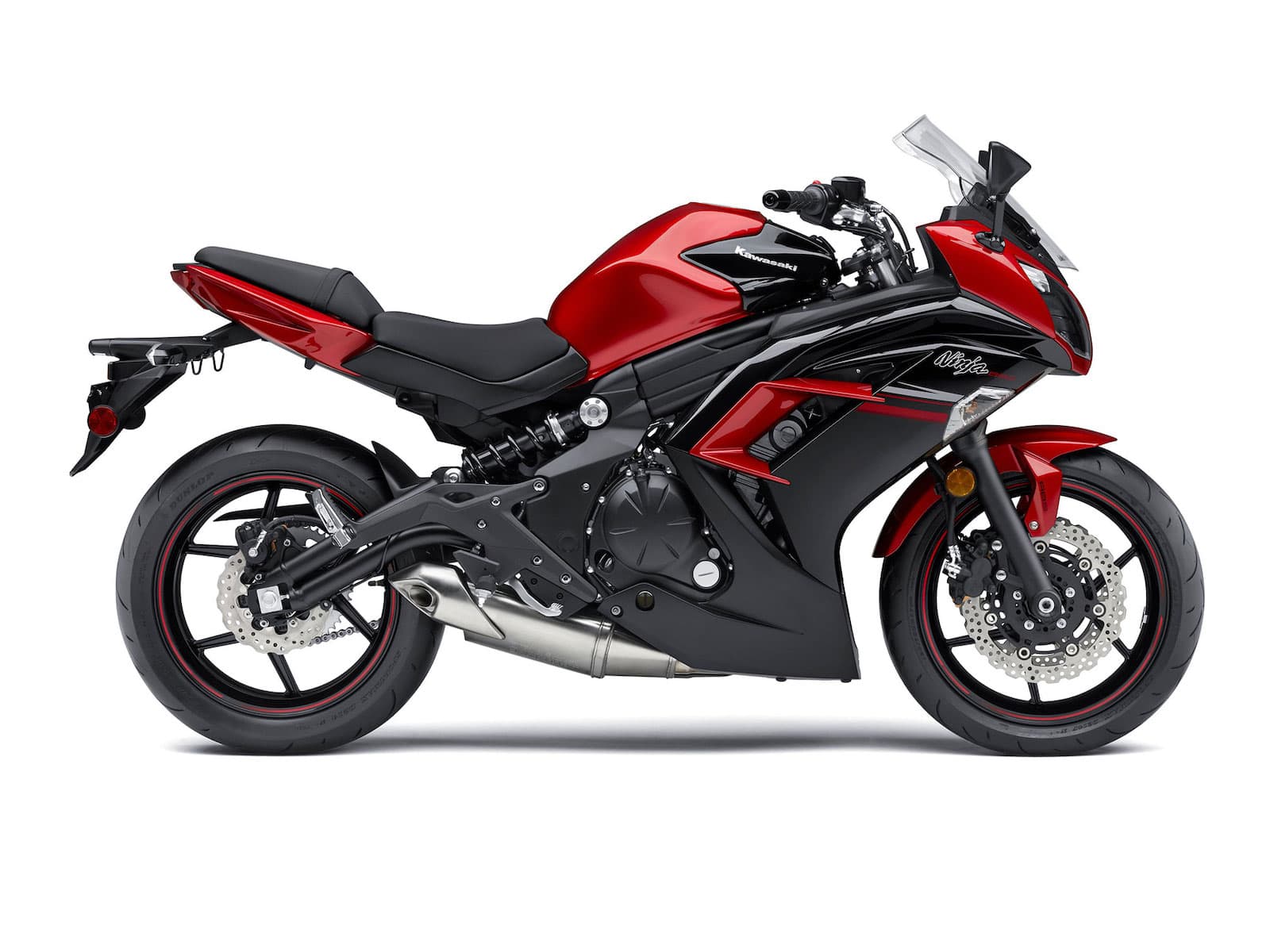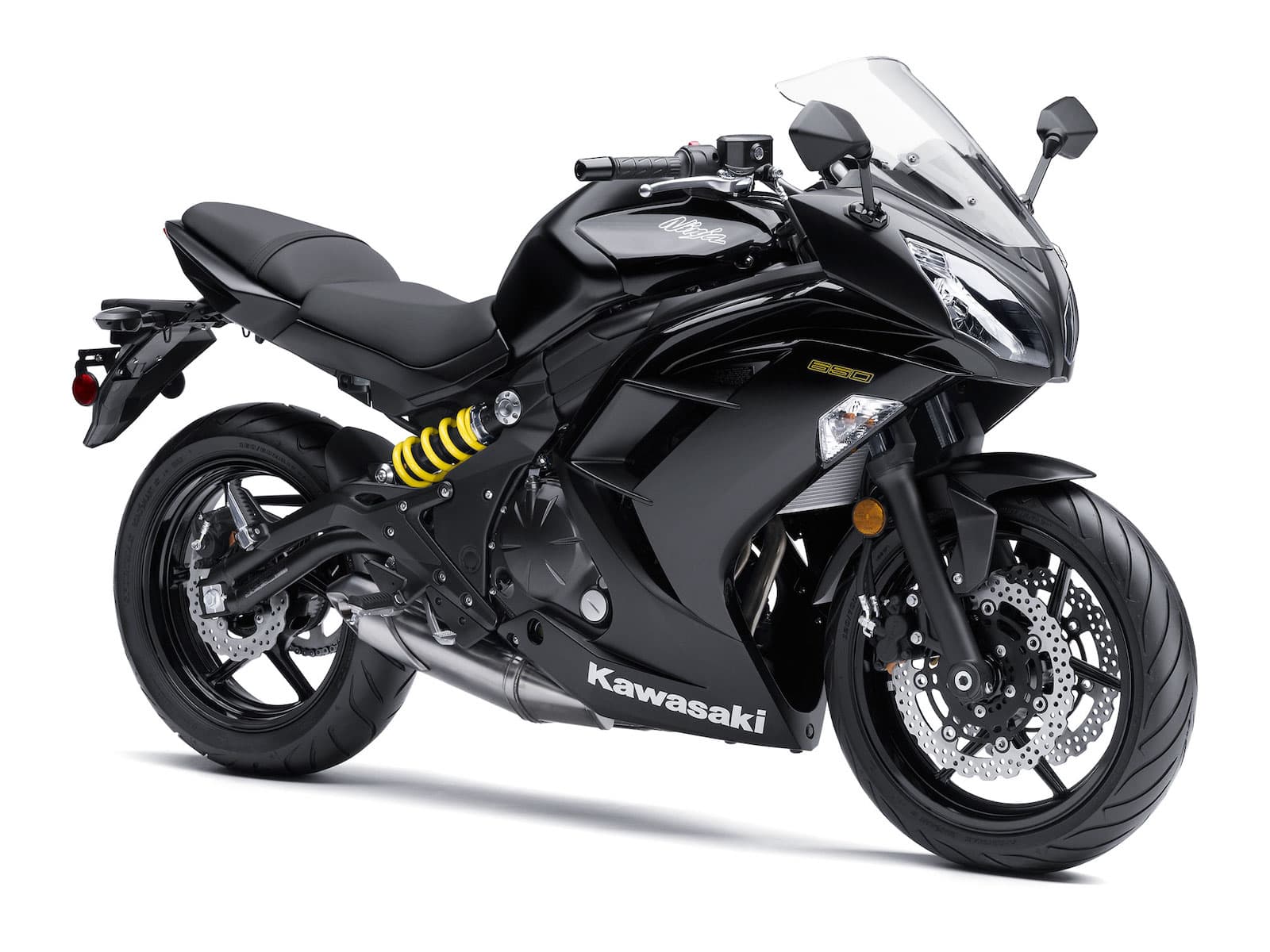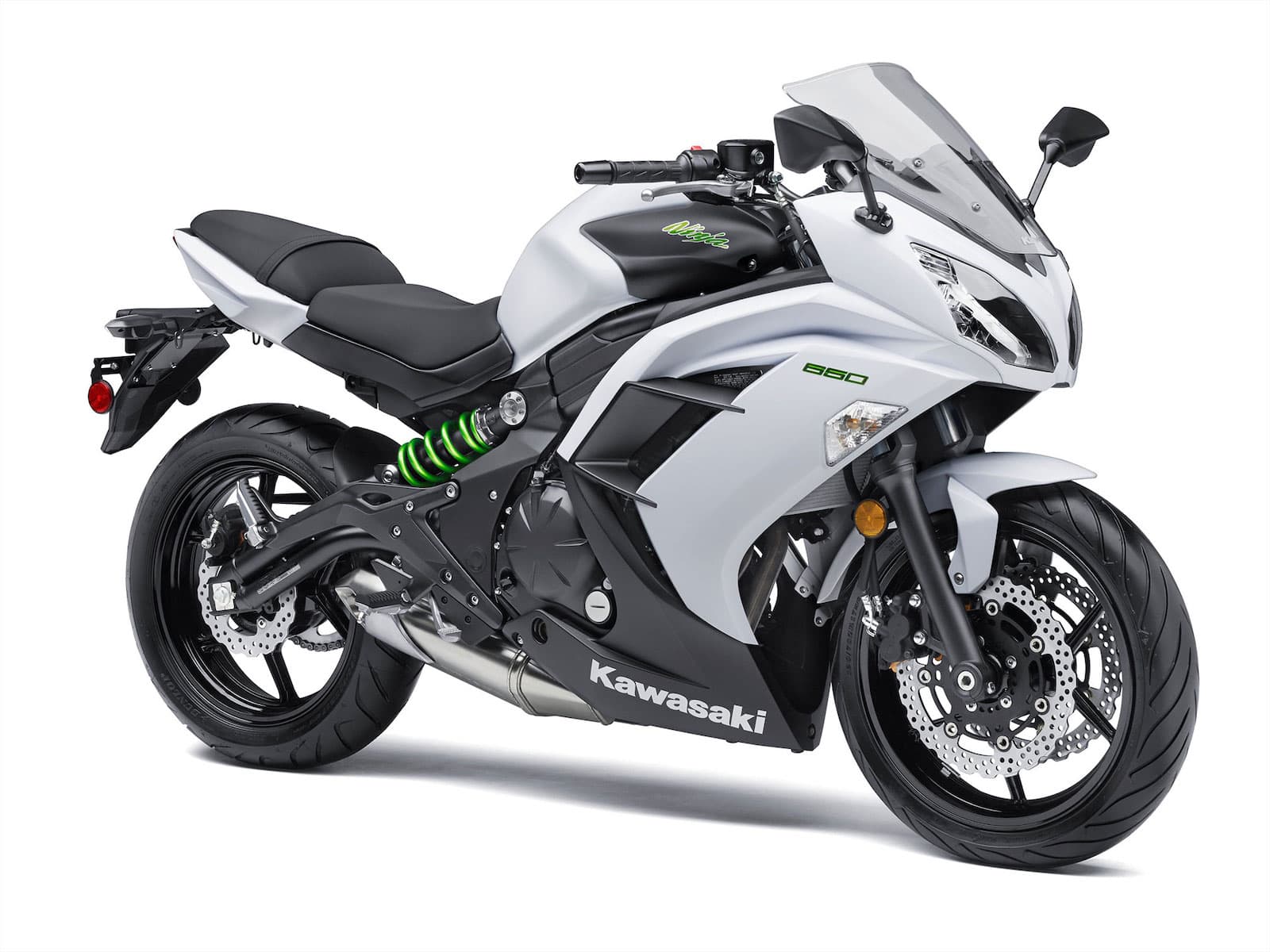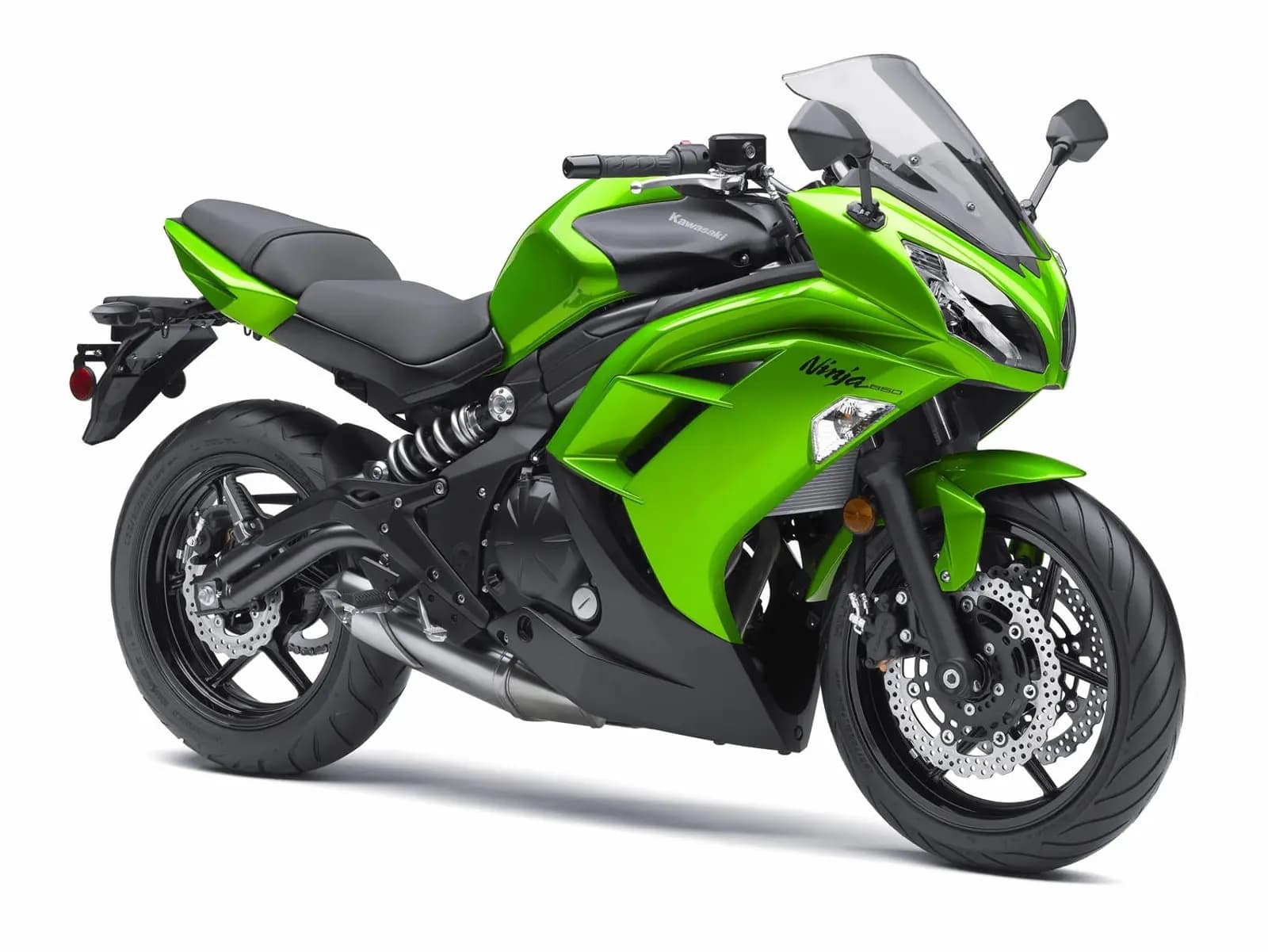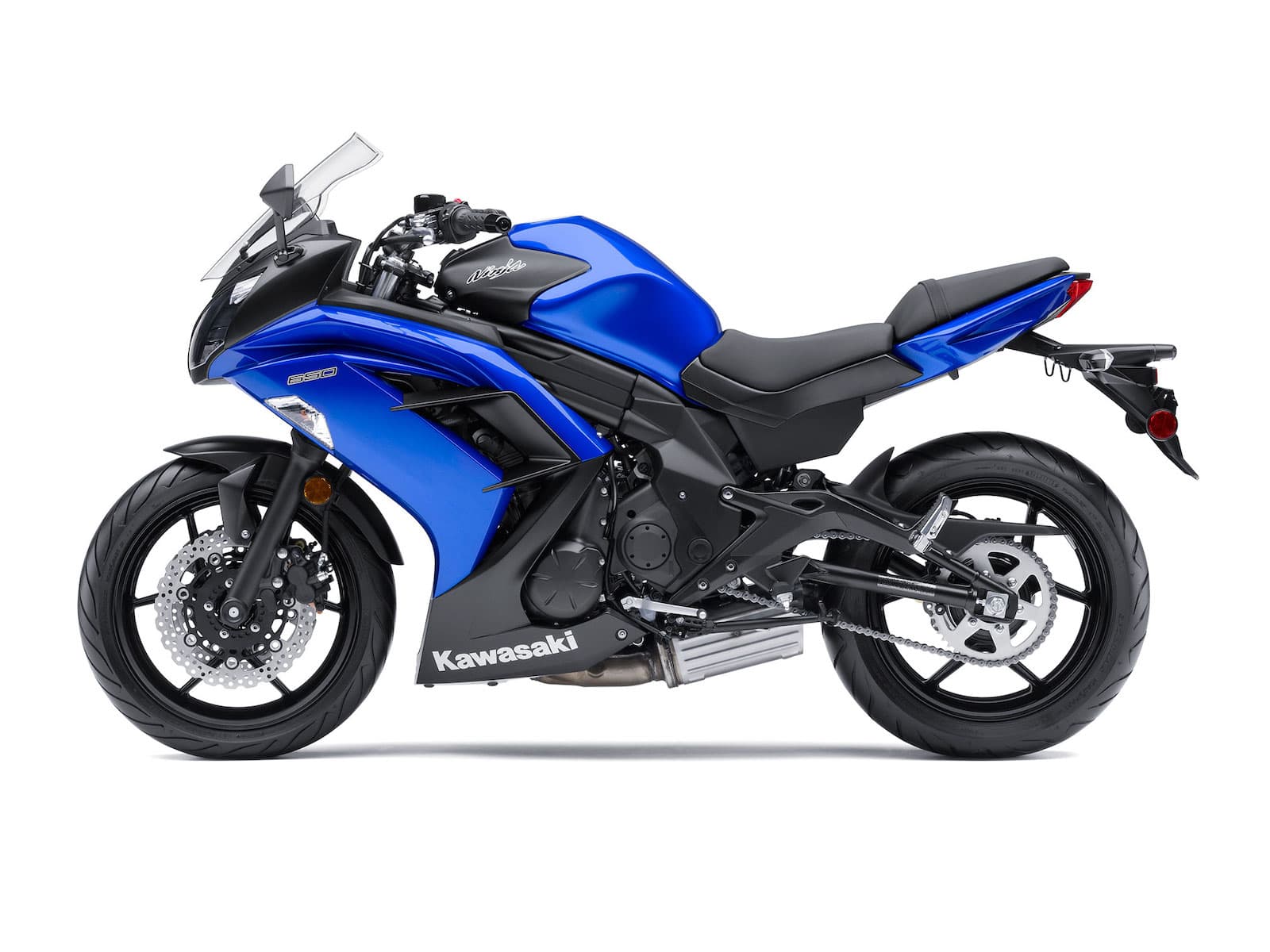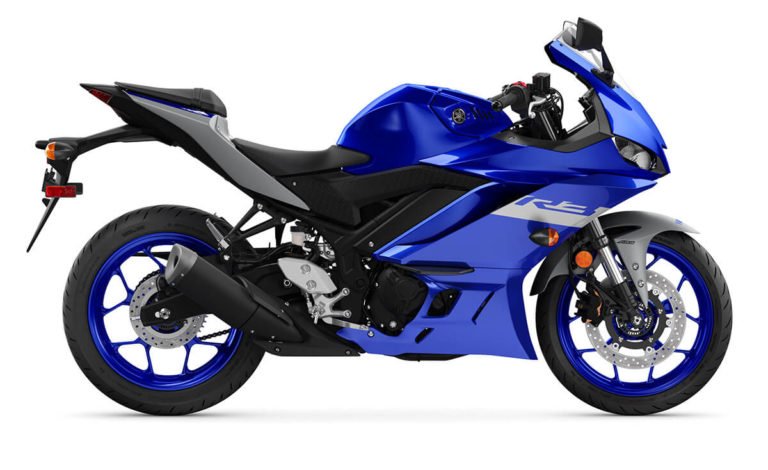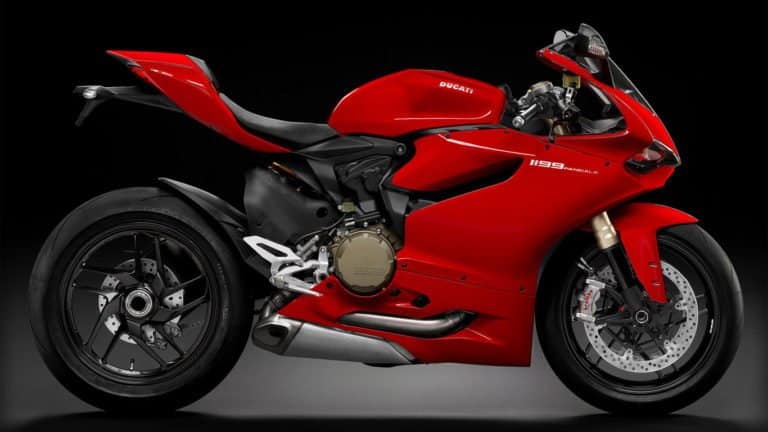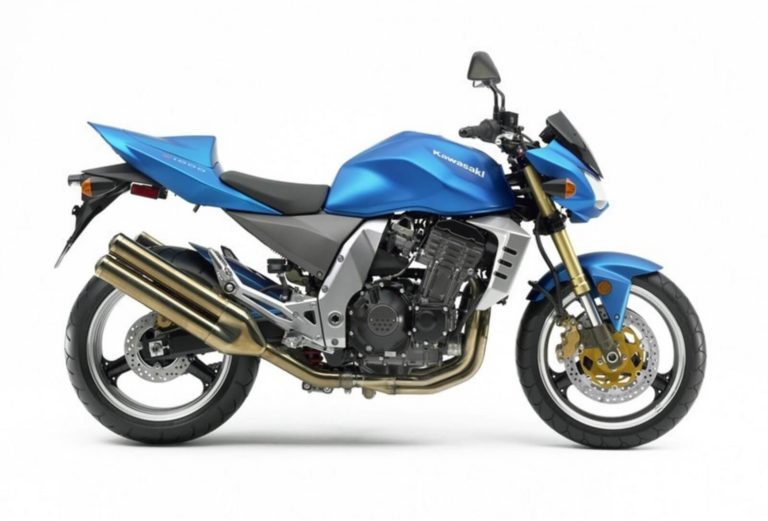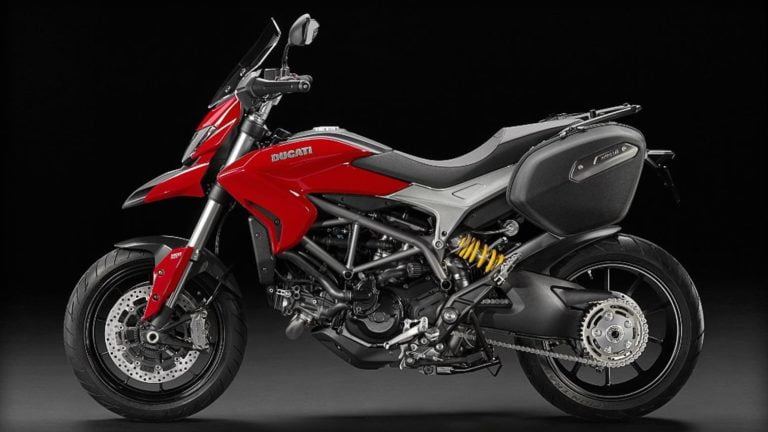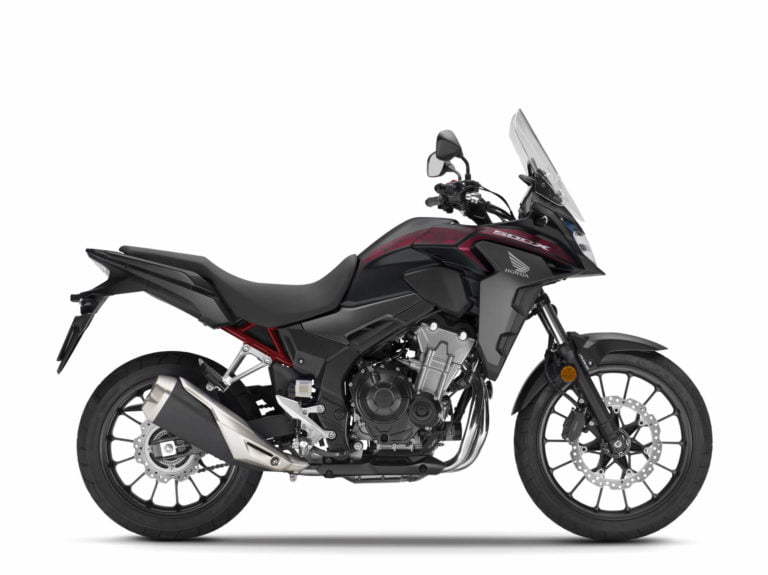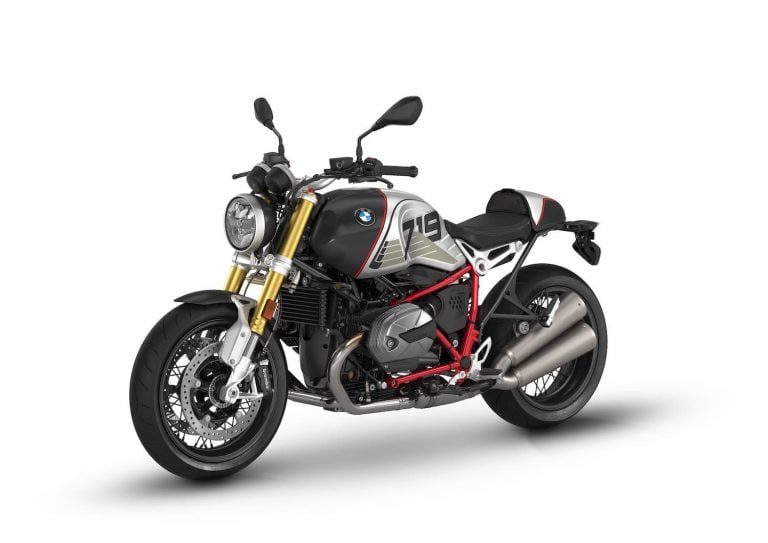Kawasaki Ninja 650 (2012-2016) Maintenance Schedule and Service Intervals
This is the maintenance schedule with associated service intervals for the Kawasaki Ninja 650 made between 2012-2016.
The Kawasaki Ninja 650/ER-6F is a parallel twin motorcycle with a fairing. It’s the sportier stablemate of the naked ER-6N, and later the Z650, which is otherwise identical. They even both have handlebars, which is quite unusual for a motorcycle with a fairing.
The Kawasaki has gone through a few major updates since launch in 2006.
- 2006-2008 Kawasaki Ninja 650R, a.k.a. ER-6F/EX-6: The first base model. Made 53 kW (71 hp) @ 8,500 rpm, and weighed 208 kg (461 lb) wet. Twin gauges.
- 2009-2011 Kawasaki Ninja 650R a.k.a. ER-6F: First US imported model. Revised first edition with more midrange and better engine cooling. Reduced vibration from rubber engine and handlebar mounts. Wider seat, taller fairing. Big LCD (no tachometer dial) with red backlighting.
- 2012-2016 Kawasaki Ninja 650: All new bodywork, wider handlebars, new analogue tachometer + digital LCD with more information.
- 2017+ Kawasaki Ninja 650: New lightweight trellis frame and lighter engine — bike is 19 kg (42 lb) lighter. No side-mounted shock. New slipper clutch. More aggressive bodywork. Slightly lower top-end power due to emissions restrictions.
During the years, almost nothing has changed with the engine — though a few parts have (e.g. the air filter). Those are noted below.
This site has links for things like oil and spark plugs from which we earn a commission (which unfortunately nobody can save, not even us). If you appreciate this work, then please use those links. Thanks!
What you need to service the Kawasaki Ninja 650 (2012-2016)
If you’re servicing the Kawasaki Ninja 650, firstly, you might need these common motorcycle maintenance tools (thinks like an oil filter wrench, catch pan, etc.).
But aside from that, you’ll need these specific items to maintain the Kawasaki Ninja 650 (2012-2016 spec).
| Part | Kawasaki Ninja 650 Spec |
|---|---|
| Oil | You need 1.8L (1.7 US qt) of SAE 10W-40 engine oil “with API SG, SH, SJ, SL or SM with JASO MA, MA1 or MA2 rating”, preferably Kawasaki 10W-40 Engine Oil, or another high-quality oil like Motul 7100.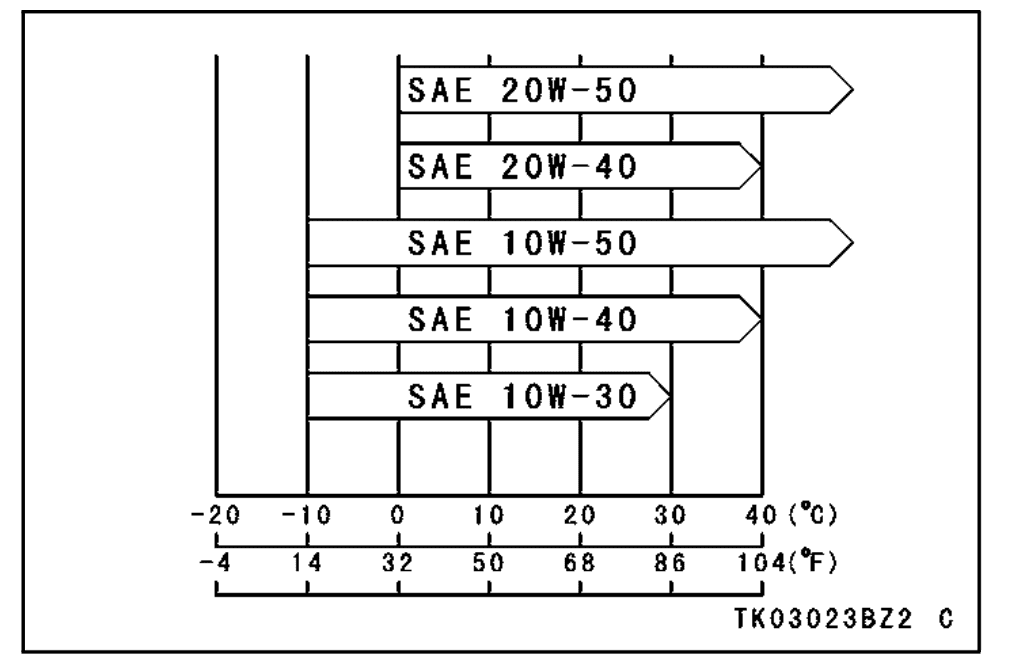 Don’t over-torque the drain bolt (spec is 30 Nm/22 lb-ft per the manual) — use a torque wrench if you don’t have experience with how much torque is enough. |
| Oil filter | Oil filter is part 16097-0008, or you can use Hiflofiltro HF303RC. Torque for oil filter is 17.5 Nm (12.9 ft-lb) (use a torque wrench) |
| Front brake pads | You can get original OEM parts from a dealership, or double-sintered EBC brake pads for better bite and wear. Part numbers are: Left hand calliper: FA229HH, Right hand calliper: FA231HH |
| Rear brake pads | As with the front brake pads,yYou can get original OEM parts from a dealership, or double-sintered EBC brake pads for better bite and wear. EBC part number is FA192HH. |
| Spark plugs | NGK CR9EIA-9, with a spark plug gap of 0.8-9.0mm (use a spark plug gapping tool), torqued to 13 Nm or 9 ft-lb (use a torque wrench) |
| Air filter | Kawasaki changed the air cleaner during the evolutions of the Ninja 650R/Ninja 650. Part numbers is 11013-0713. DNA also makes performance air filters for later models, and their part number is P-K6N12-01. |
| Cable lubricant | Remember to lubricate your clutch cable (and brake cables if you have them) with a cable lubricant. Protect All Cable Life is a good general-purpose lubricant. |
| Chain lubricant | The chain needs to be lubricated every 600 km/400 miles (or more, if it gets wet/dirty). Motul chain paste is cheap and well-loved. |
| Brake fluid | Spec is to use DOT-4 brake fluid like Castrol DOT 4. |
| Coolant | Use nitrate-free, phosphate-free, ethylene glycol-based coolant with anti-corrosion inhibitors, e.g. Zerex Asian Vehicle blue coolant. |
| Grease | Use a lithium soap based grease for all the important greasing points. |
Maintenance Schedule for Kawasaki Ninja 650.
Below is the maintenance schedule for the Kawasaki Ninja 650 from 2012-2016.
The maintenance for the Kawasaki Ninja 650 is broken into two sections — replacement parts, and engine and chassis maintenance.
Legend for reading maintenance schedule
- #: Service more frequently when operating in severe conditions: dusty, wet, muddy,
high speed, or frequent starting/stopping. - When there is a time and distance interval, replace it at the earlier of the two.
Parts to replace on the Ninja 650
| km x 1000 | 1 | 12 | 24 | 36 | 48 | |
|---|---|---|---|---|---|---|
| mi x 1000 | Every | 0.6 | 7.5 | 15 | 22.5 | 30 |
| Air cleaner element # – replace | 18000 km (11250 mile) | |||||
| Engine oil # – change (Kawasaki 10W-40 Engine Oil) | year, more often if riding aggressively | • | • | • | • | • |
| Oil filter – replace (HF303RC) | year | • | • | • | • | • |
| Fuel hoses -replace | 5 years | |||||
| Coolant – change (Zerex Asian Vehicle Coolant) | 3 years | • | ||||
| Radiator hoses and O-rings – replace | 3 years | • | ||||
| Brake hoses and pipe – replace | 4 years | |||||
| Brake fluid (front and rear) – change (Castrol DOT 4) | 2 years | • | • | |||
| Rubber parts of master cylinder and caliper – replace | 4 years | • | ||||
| Spark plug – replace (CR9EIA-9) | • | • | • | • |
Periodic Maintenance — Engine & Chassis
| km x 1000 | 1 | 6 | 12 | 18 | 24 | 30 | 36 | |
|---|---|---|---|---|---|---|---|---|
| mi x 1000 | Every | 0.6 | 3.75 | 7.5 | 11.25 | 15 | 18.75 | 22.5 |
| Valve clearance – inspect | • | |||||||
| Throttle control system (play, smooth return, no drag) – inspect | year | • | • | • | • | |||
| Engine vacuum synchronization – inspect | • | • | • | |||||
| Idle speed – inspect | • | • | • | • | ||||
| Fuel leak (fuel hose and pipe) – inspect | year | • | • | • | • | |||
| Fuel hoses damage – inspect | year | • | • | • | • | |||
| Fuel hoses installation condition – inspect | year | • | • | • | • | |||
| Coolant level – inspect | • | • | • | • | ||||
| Coolant leak – inspect | year | • | • | • | • | |||
| Radiator hose damage – inspect | year | • | • | • | • | |||
| Radiator hoses installation condition – inspect | year | • | • | • | • | |||
| Evaporative emission control system – function (if fitted) | • | • | • | • | • | • | • | |
| Air suction system damage – inspect | • | • | • | |||||
| Clutch operation (play, engagement, disengagement) – inspect | • | • | • | • | ||||
| Drive chain wear – inspect # | • | • | • | |||||
| Drive chain guide wear – inspect | • | • | • | |||||
| Tire air pressure – inspect | year | • | • | • | ||||
| Wheels/tires damage – inspect | • | • | • | |||||
| Tire tread wear, abnormal wear – inspect | • | • | • | |||||
| Wheel bearings damage – inspect | year | • | • | • | ||||
| Brake fluid leak – inspect | year | • | • | • | • | • | • | • |
| Brake hoses damage – inspect | year | • | • | • | • | • | • | • |
| Brake pad wear – inspect # | • | • | • | • | • | • | ||
| Brake hose installation condition – inspect | year | • | • | • | • | • | • | • |
| Brake fluid level – inspect | 6 months | • | • | • | • | • | • | • |
| Brake operation (effectiveness, play, drag) – inspect | year | • | • | • | • | • | • | • |
| Brake light switch operation – inspect | • | • | • | • | • | • | • | |
| Front forks/rear shock absorber operation (damping and smooth stroke) – inspect | • | • | • | |||||
| Front forks/rear shock absorber oil leak – inspect | year | • | • | • | ||||
| Steering play – inspect | year | • | • | • | • | |||
| Steering stem bearings – lubricate | 2 years | • | ||||||
| Lights and switches operation – inspect | year | • | • | • | ||||
| Headlight aiming – inspect | year | • | • | • | ||||
| Side stand switch operation – inspect | year | • | • | • | ||||
| Engine stop switch operation – inspect | year | • | • | • | ||||
| Chassis parts – lubricate | year | • | • | • | ||||
| Bolts and nuts tightness – inspect | • | • | • | • |
Maintaining Your Chain on the Kawasaki Ninja 650
It’s important to maintain your chain on the Ninja 650, as on any chain-driven motorcycle. Use a good-quality chain lubricant like Motul chain paste, or a Motul chain care kit which comes with a couple of handy tools to maintain the chain.
Kawasaki recommends you follow the following chain maintenance schedule:
| Chain maintenance item | Every |
|---|---|
| Check drive chain lubrication condition, lubricating if necessary (Motul chain paste) | 400 mi / 600 km |
| Check drive chain slack, adjusting if necessary | 600 mi / 1000 km |
Notes:
- Do these items (checking/adjusting slack, and checking/applying lubrication) more often if you ride your Ninja 650 in dusty or rainy conditions.
- Always lubricate the chain after washing the motorcycle.
Tyre size and tyre pressure for the Kawasaki Ninja 650
The Kawasaki Ninja 650 has the following tyres and tyre sizes standard:
| Tyre | Size | Tyre pressure (cold) |
|---|---|---|
| Front | 120/70 ZR17 M/C (58W) | 225 kPa/32psi |
| Rear | 160/60 ZR17 M/C (69W) | 250 kPa/36psi |
People usually fit street or sport touring tyres on the Ninja 650.
About the Kawasaki Ninja 650 (2012)
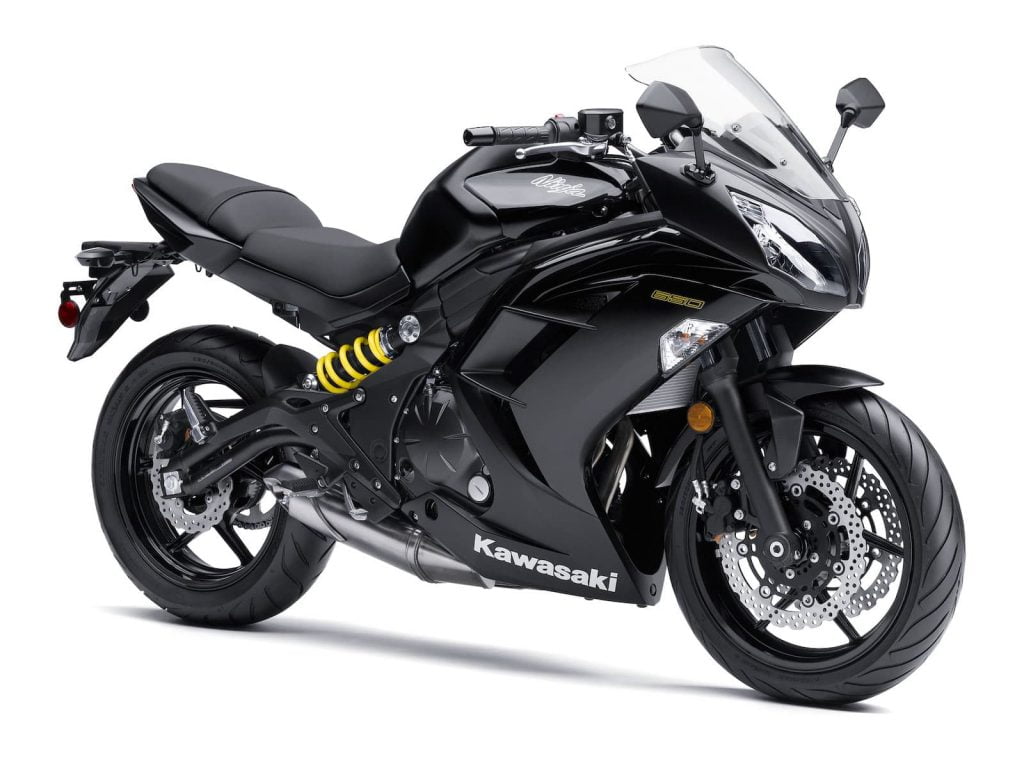
The third generation of Ninja 650 was released in 2012 and kept constant until 2016, other than colour changes.
Like the earlier 2nd generation (2009-2011) Kawasaki Ninja 650, the 2012-2016 Ninja 650 is a general purpose sport motorcycle based on a 649cc parallel twin motor with a 180-degree crank.
The engine is liquid-cooled, 8-valve (4 valves per cylinder) 649 cc parallel twin with dual overhead cams. It’s tuned for around 50 kW or 70 hp of peak power around 7500 rpm, optimising for mid-range power and torque, making it suitable for everyday use without getting “bored”.
The 3rd gen Ninja 650 keeps the spirit of the general purpose middleweight Ninja — an extremely reliable (dare I say “bulletproof”) engine and simple handling. It’s generally a very easy motorcycle to get along with.
The Kawasaki Ninja 650 is designed for commuting, but it has enough power to send it north of 100 mph when need be. The chassis is stable and compliant, and the braking is on the side of sporting with twin 300mm discs — though only two-piston calipers.
Like other Ninja motorcycles, the Kawasaki Ninja 650 also looks great. In fact, at first blush, it looks like a high-end sportbike, until you notice it has a thinner profile rear tyre and only two exhaust header pipes rather than four.
While the riding position is very comfortable, it doesn’t have sky-high tell-tale handlebars like an adventure bike does. It looks sporty!
In 2012, Kawasaki redesigned the Ninja 650 and gave it sleeker, more aggressively styled bodywork than before. They also added
- An adjustable 3-position windscreen
- A 20mm handlebar
- A two-piece seat that’s topped with thicker form
- An analogue tachometer above an LCD information display, replacing the orange backlight all-LCD of the previous version
Service intervals for the Ninja 650 are the same, with Kawasaki recommending oil changes every 7500 miles (12000 km), with valve inspections every 15000 miles (24000 km).
Kawasaki updated the the 2017 Kawasaki Ninja 650 visually and re-tuned the engine for more up-to-date emissions compliance.
Manual for the Kawasaki Ninja 650 (2012-2016)
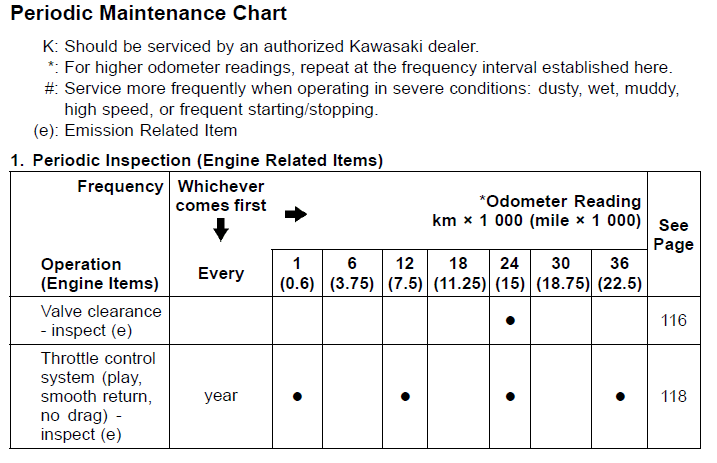
The above maintenance schedule comes directly from the user’s manual for the 2015-2016 Kawasaki Ninja 650 and Ninja 650 ABS, which is available here.
